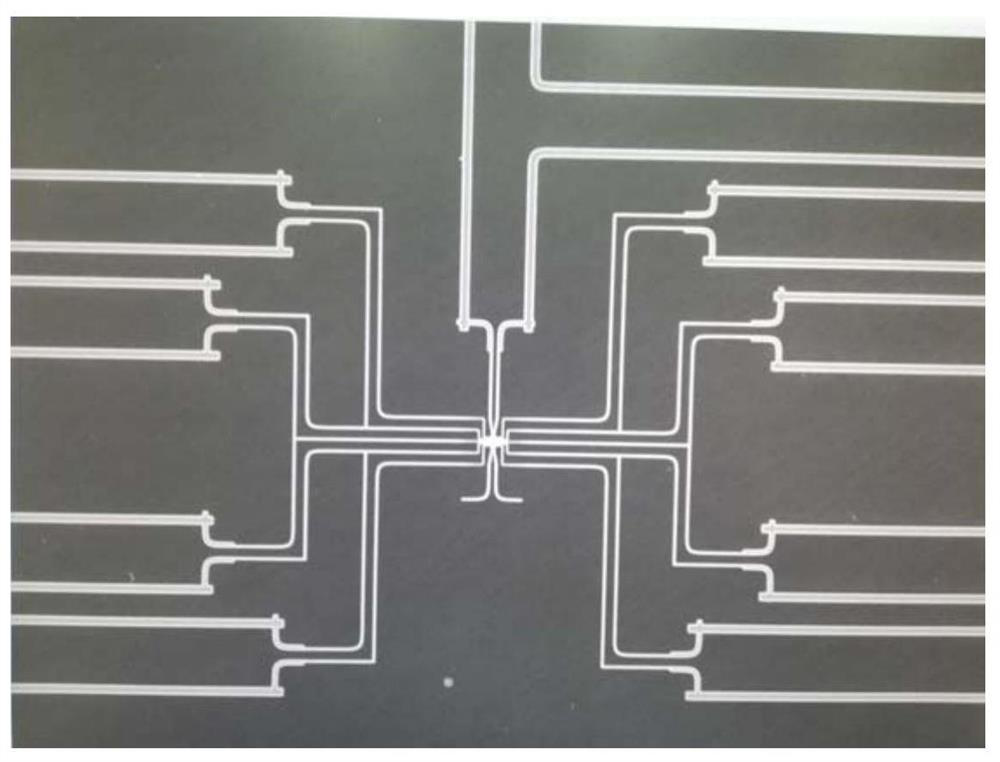A low-temperature readout method for multi-channel superconducting nanowire single-photon detectors
A technology of single-photon detectors and superconducting nanowires, which is applied in the direction of using electric radiation detectors for photometry and measurement circuits, and can solve the problems of multi-channel detectors with many output ports, weak anti-interference ability, weak detection signals, etc. problem, to achieve the effect of avoiding environmental noise, strong anti-magnetic and simple structure
- Summary
- Abstract
- Description
- Claims
- Application Information
AI Technical Summary
Problems solved by technology
Method used
Image
Examples
Embodiment
[0023] Example: The multi-channel superconducting nanowire single-photon detector and superconducting nanowire encoder are loaded in a 1.5K refrigerator, and the installation process of the circuit is introduced. Such as figure 1 As shown, at first, the multi-channel superconducting nanowire single photon detector (this embodiment takes seven as an example) and three superconducting nanowire encoders are connected at low temperature, and according to figure 1 The connection methods shown in are coupled to each other. At low temperature, the superconducting nanowire encoder encodes the detection signal of each superconducting nanowire single photon detector and performs signal amplification once to convert the original signal into three encoded signals. Secondly, the three superconducting nanowire encoders are output to room temperature through the SMA interface and the coaxial line, and then the output signals of the three channels are amplified again through three amplifiers...
PUM
 Login to View More
Login to View More Abstract
Description
Claims
Application Information
 Login to View More
Login to View More - R&D Engineer
- R&D Manager
- IP Professional
- Industry Leading Data Capabilities
- Powerful AI technology
- Patent DNA Extraction
Browse by: Latest US Patents, China's latest patents, Technical Efficacy Thesaurus, Application Domain, Technology Topic, Popular Technical Reports.
© 2024 PatSnap. All rights reserved.Legal|Privacy policy|Modern Slavery Act Transparency Statement|Sitemap|About US| Contact US: help@patsnap.com










